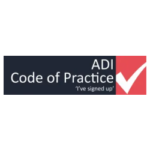'Show me, tell me' - car
During your driving test, you will be asked a ‘show me and a tell me‘ vehicle safety questions by the examiner.
Have a look at the questions below and make sure you are fully prepared as you can fail the driving test in this area – key to success is preparation.
KWIK PASS Driver Training
- 75a Crawley Road, Luton, Bedfordshire, LU1 1HX
- 079 666 777 77
- info@kwikpass.org





